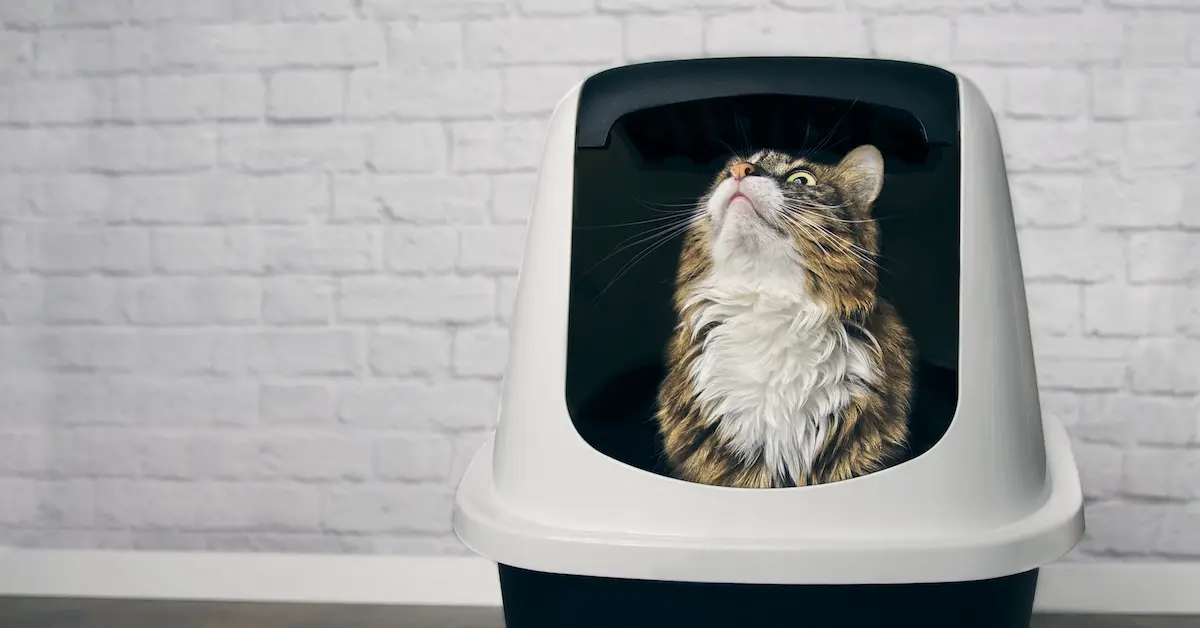Red flags when adopting a cat include lack of knowledge about the cat and home, not being allowed to visit the sanctuary, and sudden changes in the cat’s routine. It is important to set realistic expectations and follow the “Rule of Three” for the cat to acclimate to their new environment.
Gradually introduce changes and avoid making sudden changes within the first week of adoption. When choosing a sanctuary, physically visit the location to ensure it is well kept and reputable. Ensuring the cat’s socialization and behavior history is also crucial.
By being vigilant of these red flags, you can ensure a successful and happy adoption process.

Credit: www.umc.edu
Realistic Expectations
Adopting a cat can be an exciting and rewarding experience. However, it’s important to set realistic expectations when bringing home your new feline friend. Cats are creatures of habit and take time to adjust to new environments and routines. The ‘Rule of Three’ is a useful guideline to follow to gauge how long it might take for your cat to settle in:
Rule Of Three
The ‘Rule of Three’ means that you can expect your cat to take about three days to get comfortable with his new surroundings, three weeks to fully acclimate to his new home and routines, and up to three months to develop a strong bond with you and the other members of your household. Keep in mind that every cat is different, and some may take longer to adjust than others.
Settling In Time
During the first week after adoption, it’s important not to make any sudden changes to your cat’s environment, food, litter, or water. Cats find change stressful, and a new home is a significant stressor. Instead, introduce changes gradually after the settling-in period is over. This will help your cat feel more comfortable and secure in his new surroundings.
Red Flags At The Shelter
If you’re adopting from a shelter, there are some red flags to watch out for before bringing a cat into your home. It’s important to physically visit the shelter to ensure it is well-kept and that the animals are being treated properly. If the shelter refuses to let you visit or look around, that is a big red flag. Insist on visiting the shelter and do not take your cat there if you are not permitted to check it out.
Overall, adopting a cat can be a wonderful experience. By setting realistic expectations, giving your cat time to settle in, and being aware of potential red flags, you can ensure that the process goes smoothly and that your new furry friend feels right at home.

Credit: configcat.com
Dos And Don’ts
When adopting a cat, it’s important to avoid sudden changes in their environment, food, litter, or water, as cats find change stressful and a new home is a major stress. Additionally, physically visiting the shelter is crucial to ensure it’s well-kept and to speak with counselors who will prepare you for the responsibility of bringing a cat into your home.
Adopting a cat is a big responsibility, but it can also be an incredibly fulfilling experience. However, it’s important to be aware of the various dos and don’ts when bringing a new cat home. In this blog post, we’ll specifically discuss the red flags to watch out for when adopting a cat, and provide recommendations on dos and don’ts during the first week after adoption. Let’s dive in!
Dos and Don’ts During the First Week After Adoption
The first week after adopting a cat is crucial, as this is the time when they are adjusting to their new environment. Here are some dos and don’ts to keep in mind during this period:
Do
- Give your cat some space and time to adjust to the new surroundings
- Provide comfortable, warm, and safe sleeping areas for your cat
- Offer your cat the same food he had in the previous home and gradually transition to new food, if necessary.
- Keep your cat indoors for at least the first few weeks to prevent him from getting lost and overwhelmed
- Set up a consistent routine for feedings, playtime and cuddles
- Offer your cat attention and affection when he approaches you, and don’t force him to interact when he’s not ready
Don’t
- Make any sudden changes to their diet, litter, sleeping areas or environment
- Introduce your cat to other pets or young children too soon
- Punish your cat if he’s showing fear or nervousness
- Allow your cat outdoors until he has been properly acclimated to the new environment
- Neglect your cat’s litter box or hygiene needs
Red Flags When Adopting a Cat
When searching for a new cat, red flags may arise in various situations. Here are some to watch out for:
- A sanctuary or shelter that refuses to let you visit or look around
- A lack of knowledge about the cat and not being asked what kind of home you have for the cat
- Shelters that pressure you to adopt a specific cat without giving you adequate time to interact with the feline
- Shelters that do not provide enough background information about the cat, including demeanor, past behavior, and health history
Adopting a cat can be a joyous experience, but it’s important to be aware of the dos and don’ts when bringing a new furry friend home. Remember to give your cat the space and time that he needs to adjust to his new surroundings and make sure you watch out for red flags when searching for a new pet. By taking these steps, you can ensure a smooth transition and a happy cat in your home.
Red Flags For Shelters
When adopting a cat, it’s important to watch out for red flags at shelters. If they refuse to let you physically visit or look around, it’s a big warning sign. It’s also important to set realistic expectations at home and introduce changes gradually to avoid stressing out your new feline friend.
When considering adopting a cat, it’s important to find a reputable shelter to ensure your new pet’s health and happiness. However, not all shelters are created equal, and it’s essential to be on the lookout for red flags that may indicate a shelter is not up to standard. Here are some things to watch out for:
Physical visit
The first red flag to be aware of is if the shelter refuses to allow a physical visit or assessment. It’s critical that you physically go to the sanctuary to determine if it is well kept. It would be a big red flag if the sanctuary does not allow you to visit or look around. So, insist on visiting the sanctuary and do not take your cat there if you are not permitted to check it out.
Lack of knowledge
The second red flag is if the shelter staff doesn’t demonstrate enough knowledge about the cat. You should be wary if you are not asked about what kind of home you have for the cat and your lifestyle. It would be best if you looked for a reputable adoption center that has counselors who interview you and prepare you for the responsibility of bringing a cat into your home.
Being mindful of these red flags can help you identify a reputable shelter that is focused on the cat’s well-being. So, be sure to do your research and choose a shelter that best suits you and your future furry family member. Remember, the adoption process should be a positive experience for both you and your cat, and finding the right shelter is a crucial step towards achieving this.
Adopting Adult Cat
When adopting an adult cat, it’s important to watch out for red flags like a lack of knowledge about the cat, not being asked about your home, and refusal to let you visit the sanctuary. Take your time and make sure the shelter is well-kept before bringing your new furry friend home.
Red Flags When Adopting Adult Cat
Adopting an adult cat can be a great choice for anyone who wants to skip the highly energetic kitten phase or give a second chance to a feline in need. However, there are certain red flags one must consider before making such an important decision.
Red Flags To Look Out For When Adopting Adult Cat
Here are some warning signs you should be aware of when adopting an adult cat:
- Health Issues – Always check the medical records of the cat before bringing it home. If the shelter does not provide you with medical records or if the cat seems unwell, it’s best to avoid adopting it.
- Aggression – If the shelter staff tells you the cat has a history of aggression or the cat shows aggressive behavior during the adoption process, it may not be the best fit for your household.
- Unsocial Behavior – If the cat seems unsocial, indifferent, or fearful towards people, it may not be the best companion. It’s important to look for a cat that is friendly and willing to interact with humans.
- Unknown History – If the shelter cannot provide information about the cat’s history or previous living conditions, it might be risky to adopt such a cat. You never know what issues the cat might have been exposed to in the past.
- Lack of Compatibility – It’s important to assess whether the cat is compatible with your household and lifestyle. If you have children or other pets, make sure the cat’s temperament and personality match with your existing household members.
To avoid these red flags, it’s essential to visit the cat shelter in person and interact with the cat before adoption. Talking to the shelter staff and filling out an adoption application can also help you understand if the cat is the right fit for your lifestyle. Remember, adopting a cat is a long-term commitment, so make sure you choose wisely.
Lack Of Socialization
A lack of socialization can be a red flag when adopting a cat. Cats that have not been socialized properly may be fearful or aggressive towards humans and other animals. It’s important to choose a cat that has been socialized and to continue socialization activities once the cat is in its new home to ensure a happy and well-adjusted pet.
As with any new pet, it does take some time for a cat to fully adjust to their new home and surroundings. However, it’s important to keep an eye out for red flags that could indicate your newly adopted cat is struggling to adapt. One major red flag is a lack of socialization.
If your cat hasn’t had enough positive experiences with humans or other cats during their early developmental stages, they may struggle to learn how to interact properly with others. This can lead to issues like fearfulness, aggression, and general difficulty adjusting to life in a new home.
Struggle To Adapt
If you notice that your new cat is having trouble adapting to their new environment, it’s important to take steps to address the issue. One common approach is to gradually introduce your cat to new experiences and stimuli, allowing them to approach at their own pace.
For example, if your cat is fearful of people, you might start by simply sitting in the same room with them and offering treats or toys when they approach. Over time, you can gradually increase the amount of interaction you have with your cat, helping them to feel more comfortable and confident in their surroundings.
Ensuring Proper Socialization
Of course, the best way to prevent issues with socialization is to ensure that your new cat has had plenty of positive experiences with humans and other felines during their early developmental stages. When considering adoption, be sure to ask questions about the cat’s history and how they’ve been socialized.
Additionally, it’s important to choose a reputable shelter or rescue group that prioritizes socialization and works to ensure that all cats in their care receive plenty of attention and positive experiences.
Other Red Flags To Watch For
In addition to lack of socialization, there are other red flags to watch out for when adopting a cat. These include a shelter that refuses to let you visit or look around, lack of knowledge about the cat and not being asked what kind of home you have for the cat, and cats that are suddenly withdrawn or fearful.
If you notice any of these issues, it’s important to take them seriously and address them with the shelter or rescue group before proceeding with adoption. By being aware of these red flags and taking steps to address any issues that arise, you can help ensure a smooth transition for both you and your new furry friend.
Potential Red Flags
When adopting a cat, potential red flags include a lack of knowledge or preparation about the cat and not being asked about the kind of home the cat would be living in. It’s also important to physically visit the shelter to make sure it’s well-kept, as a refusal to allow a visit can be a warning sign.
Gradual changes should be made in the cat’s environment to help them acclimate to their new home.
Adopter Traits To Watch Out For
When it comes to adopting a cat, it’s not just the shelter or cat sanctuary that needs to be evaluated – the adopter is also a crucial factor. There are some traits that should be flagged by the shelter staff when assessing potential pet parents before they are allowed to adopt.
One red flag is when the adopter seems impatient. A person who is in a hurry to adopt a cat may not understand the responsibilities and patience required to take care of the cat. Such a trait can raise concerns for the shelter staff, and they might advise against immediate adoption until the adopter shows a willingness to learn.
Another red flag for adoption is when the adopter refuses to provide detailed information about their home environment. This lack of transparency can be a sign of someone who is not capable of providing a safe and secure home for the cat. Open communication between the shelter staff and the adopter is critical to ensure that the cat’s welfare is the top priority.
Cat Shelter Red Flags
It is equally important to check for red flags at the cat shelter before adopting a cat. The followings are some of the warning signs that you should watch out for:
– If the shelter is overcrowded, there is a high chance that the cats are not getting the care they need. Adopting from an overcrowded shelter might result in bringing home a cat with underlying health issues or behavioral problems that can be hard to address.
– If the facility is dirty, poorly maintained, or there is a strong odor of urine or feces, it could be a red flag. A clean and well-maintained facility is an indication of good cat welfare practices.
– A shelter that is hesitant to allow prospective adopters to tour the facility or interact with the cats is another red flag. A reputable adoption center should provide a comprehensive tour of the cat sanctuary and allow potential pet parents to evaluate the welfare of every cat up for adoption.
Adopting a cat is a significant commitment and should be taken seriously. Whether you are adopting from a shelter, sanctuary, or rescue center, it is essential to watch out for potential red flags that may compromise the cat’s welfare. Keeping these red flags in mind could save you from costly mistakes, ensuring that you bring a healthy and happy cat into your home.
Frequently Asked Questions For Red Flags When Adopting A Cat
What Is The Rule Of 3 For Adopted Cats?
The “Rule of Three” is a guideline for getting adopted cats comfortable in their new home. It suggests that cats may take about three days, three weeks, and three months to fully acclimate to their new environment.
What Should You Not Do When Adopting A Cat?
When adopting a cat, avoid making sudden changes in the environment, food, litter, or water during the first week. Introduce changes gradually after the cat has settled in. Also, be wary of shelters that refuse to let you physically visit as it could be a red flag.
It may take up to three months for the cat to fully acclimate to its new home. Lack of socialization and aggression are also potential red flags.
What Are The Red Flags For Cat Shelters?
Red flags for cat shelters include refusing to allow visits, lack of knowledge about the cat and your home, and poor facility upkeep. When adopting a cat, avoid sudden changes and introduce them gradually. It typically takes 3 days to 3 months for a cat to acclimate to a new environment.
Cats that lack socialization may struggle and display fear or aggression.
How Long Does It Take A Cat To Get Comfortable After Adoption?
It might take three days to three months for a cat to get comfortable after adoption. Don’t make sudden changes for the first week and introduce them gradually after settling in the period is over.
Conclusion
Adopting a cat is an exciting experience, but also a responsibility that requires careful attention to red flags. Becoming aware of the common mistakes and issues that might arise when adopting a cat can prevent future challenges. One of the crucial things to remember is that settling in takes time, and adopting a cat is a long-term commitment.
Asking relevant questions, observing cat behavior, and checking out the shelter are important steps for a successful adoption process. As a responsible cat owner, it’s important to set realistic expectations, take your time, and carefully consider your decision.





2 Responses